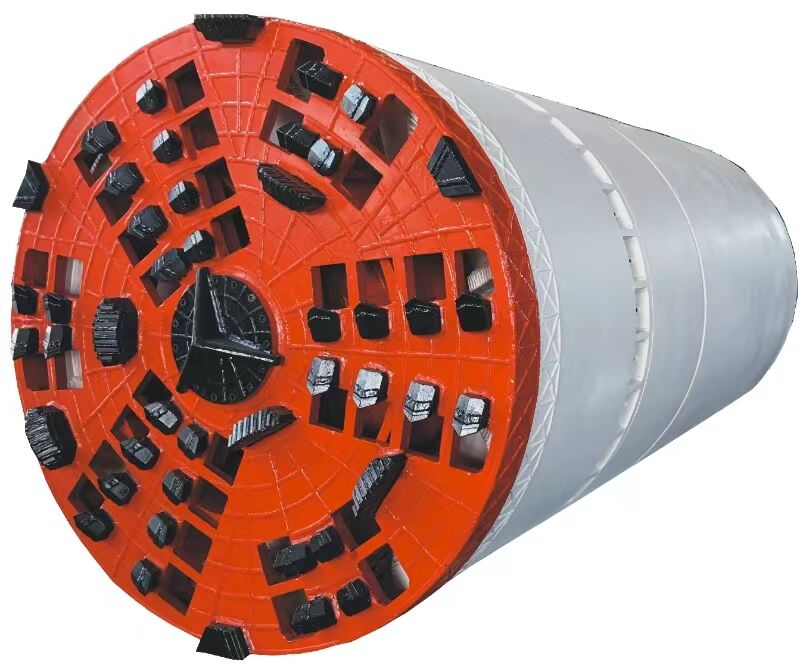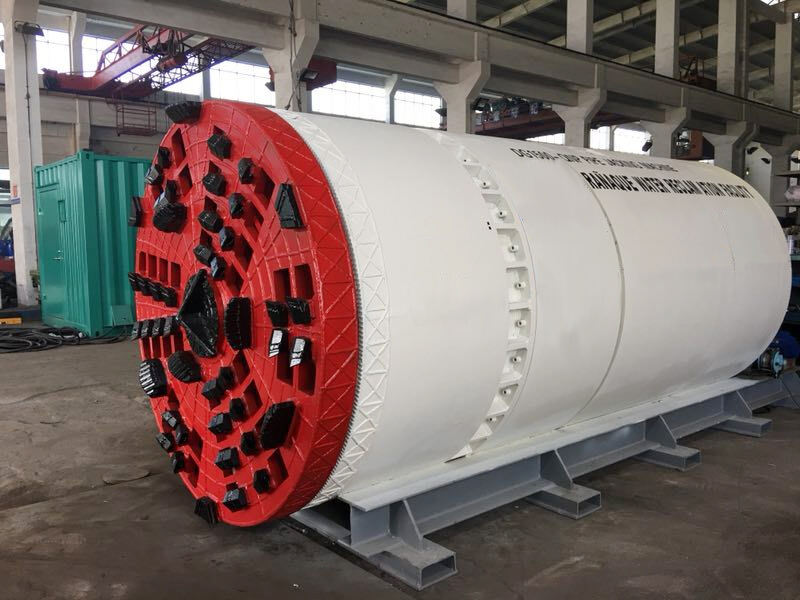Წარმატებული მილის გადაადგილების პროექტებისთვის საჭირო მითითებები
Მილის ჩატრიალება ოპერაციამ გადამხვიდარი საშუალება შექმნა საჭიდრო საკომუნიკაციო სისტემების მოწყობისთვის, რომელიც ნაკლებად არღვევს ტრადიციულ ღია მეთოდებს. ამ სრულყოფილ მიუთვისებელ ტექნოლოგიას საჭირო აქვს ზუსტი დაგეგმვა, მკაცრი შესრულება და ინდუსტრიის საუკეთესო პრაქტიკების დაცვა, რათა პროექტი წარმატებით დასრულდეს. ამ ძირეული პრინციპების გაგება მნიშვნელოვანია მშენებლებისთვის, ინჟინრებისთვის და პროექტების მენეჯერებისთვის, რომლებიც ჩართულნი არიან საჭიდრო ინფრასტრუქტურის განვითარებაში.
Ახალგაზრდული მილების დატანის ოპერაციის მეთოდები მნიშვნელოვნად განვითარდა, შეიცავს მოწინავე ტექნოლოგიებს და მეთოდებს, რომლებიც ამაღლებს ეფექტურობას და ამცირებს პროექტის რისკებს. როგორც ქალაქების გაშლა გრძელდება და ინფრასტრუქტურის მოთხოვნები იზრდება, ამ საუკეთესო პრაქტიკების დაუფლება უფრო მნიშვნელოვანი ხდება მშენებლის პროფესიონალებისთვის.
Ადგილის კვლევა და პროექტის გეგმა
Სრული მიწის კვლევა
Ნებისმიერი მილის გადაადგილების ოპერაციის დაწყებამდე აუცილებელია ადგილის სრული გამოკვლევა. ეს გულისხმობს დეტალურ ინჟინრულ-გეოლოგიურ გამოკვლევებს, ქვედა ნივთიერების ნიმუშების აღებას და გრუნტის წყლის ანალიზს. გრუნტის პირობების გაცნობა საშუალებას გვაძლევს განვსაზღვროთ საჭირო გადაადგილების ძალები და პოტენციური რთულებები, რომლებიც შეიძლება წარმოიშვას მუშაობის დროს.
Გამოყენებული იქნება გეოლოგიური რკალის გამავლელი რადარი და ბურღულის ნიმუშების აღების მეთოდები, რომლებიც მოგვცემენ მნიშვნელოვან ინფორმაციას მიწისქვეშა შეშლების, გრუნტის შედგენილობის და პოტენციური სასარგებლო კონფლიქტების შესახებ. ეს ინფორმაცია ხელს უწყობს საჭირო მანქანების შერჩევას და საშუალებას გვაძლევს დავადგინოთ რეალისტური პროექტის დროის განრიგი.
Პროექტირების გათვალისწინებები და მოწყობილობის შერჩევა
Მოწყობილობის სწორი შერჩევა მნიშვნელოვან როლს თამაშობს მილის გადაადგილების წარმატებით განხორციელებაში. გადაადგილების მილების, ჭრის სათავეების და წნევის სისტემების არჩევანი უნდა შეესაბამებოდეს პროექტის სპეციფიკაციებს და მიწის პირობებს. ინჟინრებმა უნდა გამოთვალონ თეორიული გადაადგილების ძალები, განიხილონ ფაქტორები, როგორიცაა მილის დიამეტრი, გადაადგილების სიგრძე და გრუნტის ხახუნი.
Დიზაინის ეტაპზე უნდა მოხდეს დეტალური ანალიზი გაშვების და მიღების საღონეების მდებარეობის შესახებ, რათა უზრუნველყოფილ იქნას საჭირო სივრცე და მიმაგრების კუთხის საუკეთესო პოზიციონირება. ასევე უნდა განხილულ იქნას მილის მასალის არჩევანი, გათვალისწინებული უნდა იქნას ფაქტორები მაგალითად მატარებელი ტვირთის მაჩვენებელი და კოროზიის მიმართ მდგრადობა.
Მილის მიმაგრებაში ოპერაციული განვითარება
Ზუსტი საკონტროლო სისტემები
Ახალგაზრდული მილის მიმაგრების ოპერაცია მნიშვნელოვნად დამოკიდებულია ზუსტი საკონტროლო სისტემების სიზუსტეზე და ეფექტურობაზე. ლაზერული მიმართულების სისტემები და ელექტრონული მონიტორინგის მოწყობილობები უზრუნველყოფს ზუსტ სიმეტრიას მიმაგრების მთელი პროცესის განმავლობაში. ამ სისტემების პერიოდული კალიბრაცია და შენარჩუნება აუცილებელია სიზუსტის შესანარჩუნებლად გრძელ მოძრაობის განმავლობაში.
Მიმაგრების ძალების, ნაშლის და სიმეტრიის რეალურ დროში მონიტორინგი საშუალებას აძლევს ოპერატორებს მყისი კორექტირება მოახდინონ საჭიროების შემთხვევაში. ეს პროაქტიული მიდგომა არიდებს პოტენციურ პრობლემებს მაჟორიტულ საკითხებად გადაზრდას, რამაც შეიძლება დააზიანოს პროექტის წარმატება.
Სმეხების მართვა
Მასლის გამოყენება აუცილებელია საყრდენი ძალების შესამსუბუქებლად და მილების მოხსნის მინიმუმამდე დაყვანისათვის. შესაბამისი მასლის არჩევა და მისი გამოყენება უნდა განხორციელდეს იმ სამი პირობის გათვალისწინებით, როგორიცაა მიწის პირობები, მილის მასალა და მილის სიგრძე. მასლის წნევისა და მოცულობის მუდმივი მონიტორინგი უზრუნველყოფს ოპერაციის მსვლელობისას მაქსიმალურ შედეგიანობას.
Საშენ მასლის სისტემები ხშირად მოიცავს მილის სისტემაში ავტომატურ შეყვანის წერტილებს, რათა უზრუნველყოფილ იქნას მასლის თანაბარი განაწილება. ასეთი სისტემური მიდგომა უზრუნველყოფს საყრდენი ძალების მუდმივობას და ამცირებს მილის დაზიანების ან გადაადგილების რისკს.
Რისკების მართვა და ხარისხის კონტროლი
Უსაფრთხოების პროტოკოლები
Მილის გადატანის ოპერაციებში სრული უსაფრთხოების ზომების განხორციელება არ იძლევა კომპრომისს. ეს მოიცავს რეგულარულ მოწყობილობების შემოწმებას, ღონისძიებების საშუალებებს გამართული განართქვის უზრუნველყოფისათვის და ავარიული სიტუაციების შესაბამისი პროცედურების ჩატარებას. თანამშრომლებმა უნდა მიიღონ სრული სავარჯიშო სწავლება უსაფრთხოების პროტოკოლებში და მოწყობილობების მართვაში.
Რეგულარული უსაფრთხოების აუდიტი და სამუშაო გუნდის შეხვედრები უზრუნველყოფს უსაფრთხოების სტანდარტებთან შესაბამისობის შენარჩუნებას. უსაფრთხოების პროცედურების დოკუმენტაციის და ინციდენტების შესახებ ინფორმაციის სისტემის დამყარება უნდა მოხდეს პროექტის დაწყებამდე.
Ხარისხის უზრუნველყოფის ზომები
Მილების შეყვანის ოპერაციაში ხარისხის კონტროლი გადასცემს ინსტალაციის პროცესს. მილის სეგმენტების რეგულარული შემოწმება დაზიანების, სწორი კავშირების და გასწორების შესახებ არის აუცილებელი. ხარისხის კონტროლის ზომების დოკუმენტაცია საშუალებს მომავალში მილების შენარჩუნებასა და პროექტის დასტურს.
Ხარისხის სტანდარტებისა და შემოწმების პროტოკოლების დამყარება უზრუნველყოფს პროექტის მასშტაბით სტანდარტების ერთგვაროვნებას. ამას შორის შედის მასალების რეგულარული ტესტირება, ინსტალაციის დაშვებების მონიტორინგი და საბოლოო გასწორების დასტური.

Გარემოს განსაზღვრება და მართვა
Გარემოზე გავლენის მართვა
Მოდერნული მილების შეყვანის პრაქტიკა უნდა დაცვას გარემოს უპირატესობას მისცეს. ამაში შედის გათხრილი მასალების სწორი განმარტვა, გრუნტის წყლის მართვა და ხმაურის შეზღუდვის ზომები. პროექტები უნდა შეიცავდეს გამძლე პრაქტიკას მასში სადაც შესაძლებელია, როგორიცაა გახვეული სითხეების გადამუშაობა და გარემოზე მიკერძოებული სმეარობის გამოყენება.
Გარემოს მუდმივი მონიტორინგი უზრუნველყოფს ადგილობრივი წესების დაცვას და შეამცირებს გავლენას სამყაროს ეკოსისტემებზე. ეს შეიძლება შეიცავდეს გრუნტის წყლის ტესტირებას, ხმაურის დონის მონიტორინგს და რხევის კონტროლის ზომებს.
Ზედაპირული ნაშთის კონტროლი
Ზედაპირული ნაშთის შემცირება მნიშვნელოვანია, განსაკუთრებით ქალაქურ გარემოში. მიწის მოძრაობის უწყვეტი მონიტორინგი გამოყენებით დახვეწილი გეოდეზიური ტექნიკებით დაგვეხმარება პოტენციური პრობლემების ადრე აღმოჩენაში. შესაბამისი მხარდაჭერის სისტემების განხორციელება და სახის წნევის ზუსტი კონტროლი უზრუნველყოფს მიწის სტაბილურობას.
Ზედაპირის მდგომარეობისა და მიმდებარე სტრუქტურების რეგულარული შეფასება უზრუნველყოფს ნებისმიერი საფუძვლის პრობლემების ადრეულ აღმოჩენას. ეს პროაქტიული მიდგომა ხელს უწყობს არსებული ინფრასტრუქტურის დაზიანების პრევენციას და შენარჩუნებს საზოგადოებრივ უსაფრთხოებას.
Ხშირად დასმული კითხვები
Რით განისაზღვრება მილის გადაადგილების ოპერაციის წარმატება?
Მილის გადაადგილების ოპერაციების წარმატება რამდენიმე გასაღებ ფაქტორზე არის დამოკიდებული, მათ შორის სრულყოფილი ადგილის გამოკვლევა, საშუალებების სწორი არჩევანი, ზუსტი საკონტროლო სისტემები, სანთელის მართვის ეფექტუალურობა და უსაფრთხოების პროტოკოლების დაცვა. გარდა ამისა, გამოცდილი ოპერატორები და კარგად შენარჩუნებული მანქანები მნიშვნელოვან როლს თამაშობენ ოპტიმალური შედეგების მისაღებად.
Როგორ აისახება მიწის მდგომარეობა მილის გადაადგილების ოპერაციებზე?
Მიწის პირობები მნიშვნულად აზენებს მილის გადაადგილების ოპერაციებზე იმით, რომ მოქმედებს გადაადგილების ძალებზე, მოწყობილობის არჩევანზე და შესაძლო რთულებზე მონტაჟის დროს. სხვადასხვა ტიპის მიწას საჭიროებს სპეციფიკურ მიდგომებს სანელებელის გამოყენებაში, მოტყავის არჩევანში და ექსპლუატაციურ პარამეტრებში. სრულყოფილი გეოტექნიკური გამოკვლევა აუცილებელია ამ რთულების წინასწარ გამოსაცნობად და მათ მოგვარებისთვის.
Რით არის სარგებლიანი მილის გადაადგილება ტრანშის გაკეთების ტრადიციულ მეთოდებთან შედარებით?
Მილის გადაადგილებას აქვს რამდენიმე უპირატესობა ტრადიციული ტრანშის გაკეთების მეთოდებთან შედარებით, მათ შორის ზედაპირის მინიმალური დარღვევა, გარემოზე ნაკლები ზემოქმედება, დაბალი სოციალური ხარჯები და შესაძლებლობა მილების მონტაჟი უფრო მეტ სიღრმეზე. ეს განსაკუთრებით სასარგებლოა ქალაქებში, სადაც უნდა შეინარჩუნონ ზედაპირის აქტივობები და სადაც არსებული კომუნიკაციები ხდის არაპრაქტიკულს ღია ტრანშის გაკეთებას.
Როგორ ხდება მიმდევრობის სიზუსტის შენარჩუნება მილის გადაადგილების დროს?
Წრფივობის სიზუსტე ინარჩუნება მოწყობილობის მართვის სისტემის, ელექტრონული მონიტორინგის და ხშირი გეოდეზიური გაზომვების საშუალებით. ოპერატორები აკონტროლებენ და უკეთებენ კორექტირებას მოცემული ინფორმაციის საფუძველზე რეჟიმში რეალურ დროში. ხშირი შემოწმება და მარშრუტიზაციის სისტემების კალიბრაცია უზრუნველყოფს მილის სტრინგის წრფივობას მთელი მოწყობის პროცესში.

 EN
EN
 AR
AR BG
BG HR
HR CS
CS FR
FR DE
DE EL
EL HI
HI IT
IT JA
JA KO
KO RO
RO RU
RU ES
ES TL
TL ID
ID LT
LT SK
SK SL
SL UK
UK VI
VI ET
ET TH
TH TR
TR FA
FA AF
AF MS
MS HY
HY AZ
AZ KA
KA BN
BN LO
LO LA
LA MN
MN NE
NE MY
MY KK
KK UZ
UZ KY
KY